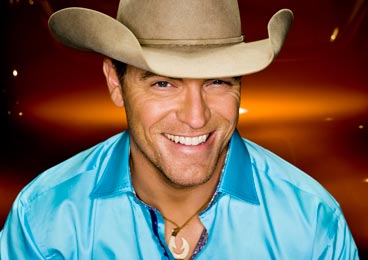Canadian singer songwriter George Canyon is all too familiar with the warning signs of type 1 diabetes, including feeling tired, hungry, and “drinking anything you can get your hands on.” In an exclusive Post interview, the recording artist shares his early struggles with the disease and how he is encouraging others to live their dreams.
There are several forms of diabetes. Type 1 occurs when an overactive immune system knocks out cells in the body that produce insulin. Once called juvenile or insulin-dependent diabetes, the condition can occur at any age. Research continues, but to date, its exact cause remains unknown.
Post editors asked superstar country singer George Canyon about the challenges of living with diabetes and his inspiring work with kids and their families who are also coping with the endocrine condition.
Part 1: A Young Man’s Struggle
Post: When were you diagnosed with type 1 diabetes?
Canyon: I was diagnosed at age 14, after developing the symptoms that most type 1 diabetics suffer, including drinking anything you can get your hands on, going to the bathroom all the time because you are drinking so much, and sometimes feeling tired or cranky. Thinking back, the symptoms began about this time of year, so I’m approaching my anniversary of sorts.
Dad headed up a hospital lab, and he later told me that he suspected type 1 diabetes right away. My blood sugar was tested, but then my parents let me enjoy Christmas with the family. The next day, however, I was admitted to the hospital. My sugar was 792, which is extremely high.
I was young, and bounced right back. After one week in the hospital, I was ready to go home. My grandmother had type 1 so I was quite familiar with needles and all. My only concern was getting back to Air Cadets, a group that in U.S. might compare to Young Marines. Since the age 5, I had wanted nothing else in life than to be in the Air Force and be an Air Force pilot. I wasn’t concerned about being a diabetic— I just didn’t want to miss another meeting of the Air Cadets!
Post: What happened then?
Canyon: My dream was abruptly taken away from me. When I went back to Cadets, the Commanding Officer called me into his office and said, “Son, I’m sorry to tell you this, but you will never be in the Air Force and you will never fly airplanes.” I was devastated. I remember that conversation, and how I felt, as though it were yesterday.
Post: How did your young life change and what challenges did you face?
Canyon: Having a sense of belonging is very important to a 14-year-old, and type 1 can be ostracizing disease. For example, the first birthday party that I attended as a type 1 diabetic was for a buddy mine. My friends were all having birthday cake. I was eating an apple. Suddenly, I didn’t belong. I was different, and it played very heavily on my mind.
I had many reasons to rebel—being a teenager, having type 1 diabetes, and losing what I believed to be my sole purpose in life. But I chose a different path. As I now tell the kids when I talk to them, I chose to be stubborn in a positive way. I made up my mind to control my diabetes and to not let it control me.
I also decided to become a doctor and to cure the disease that stole my dreams. Eventually I was on my way to medical school. Then, I auditioned for a band. I got the job and called my Dad—that’s another conversation I’ll never forget—and went on the road in 1990.
Post: Is having type 1 diabetes particularly challenging in light of your music career?
Canyon: It was very tough at first. Back in the 90s, we would play six nights, travel one, and then play the next town for six more. We did that over and over. I was lucky to have strong support. And I was doing the best I could to treat my type 1 diabetes in the conventional way—5 needles a day and trying to exercise and eat right. But I’m certain that those days on the road took a toll on me.
Then, about 4 ½ years ago, I went on the Animas insulin pump. The device gave my life back to me in a completely and unbelievably way. Suddenly I felt normal again. Honestly, there are days that I forget I’m a diabetic. Today I encourage parents to talk to healthcare providers about getting children on insulin pump therapy as soon as they can. I lived my teenage and early adult years treating my diabetes conventionally. Having the pump is truly amazing.
Become a Saturday Evening Post member and enjoy unlimited access. Subscribe now



